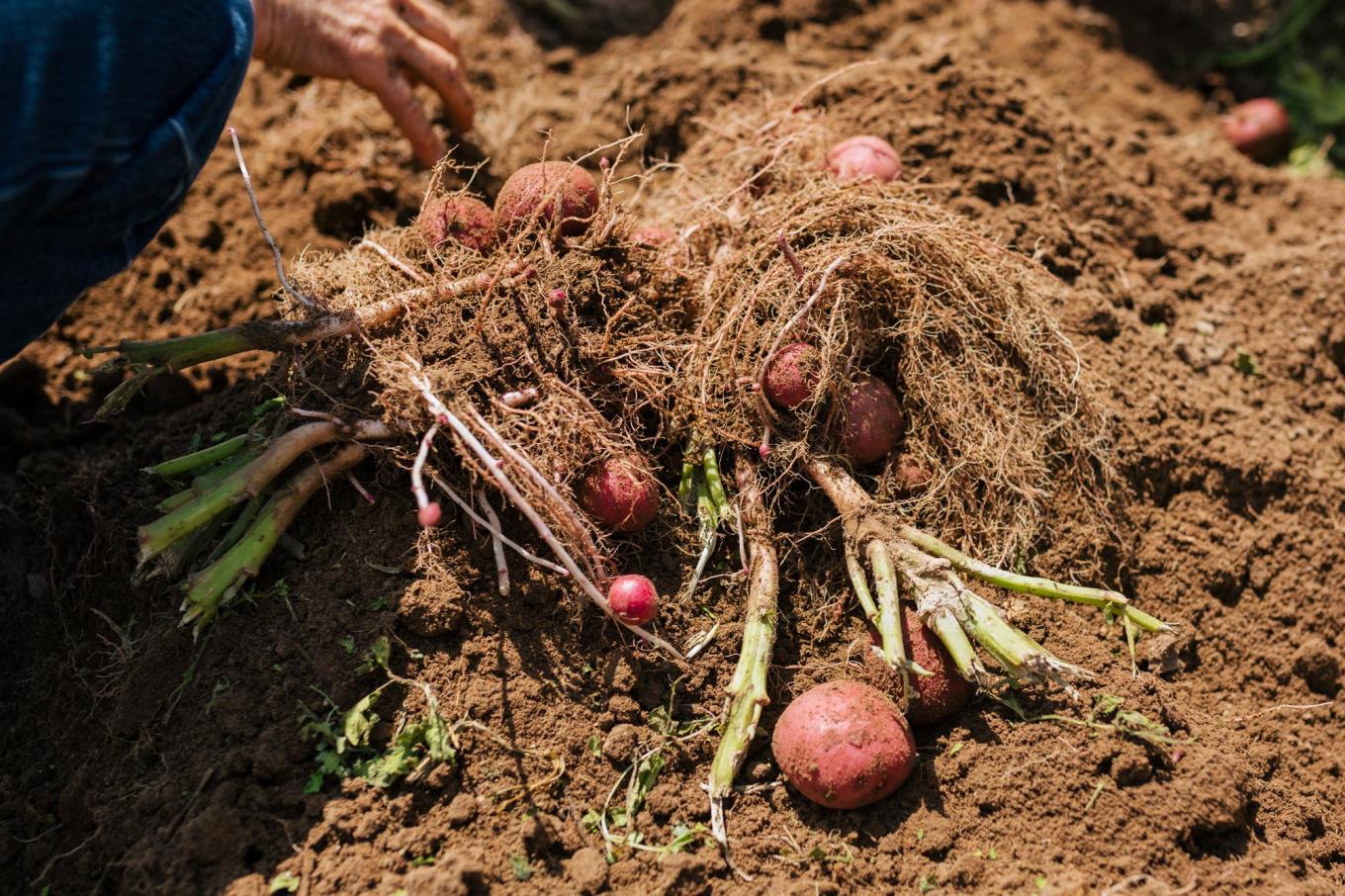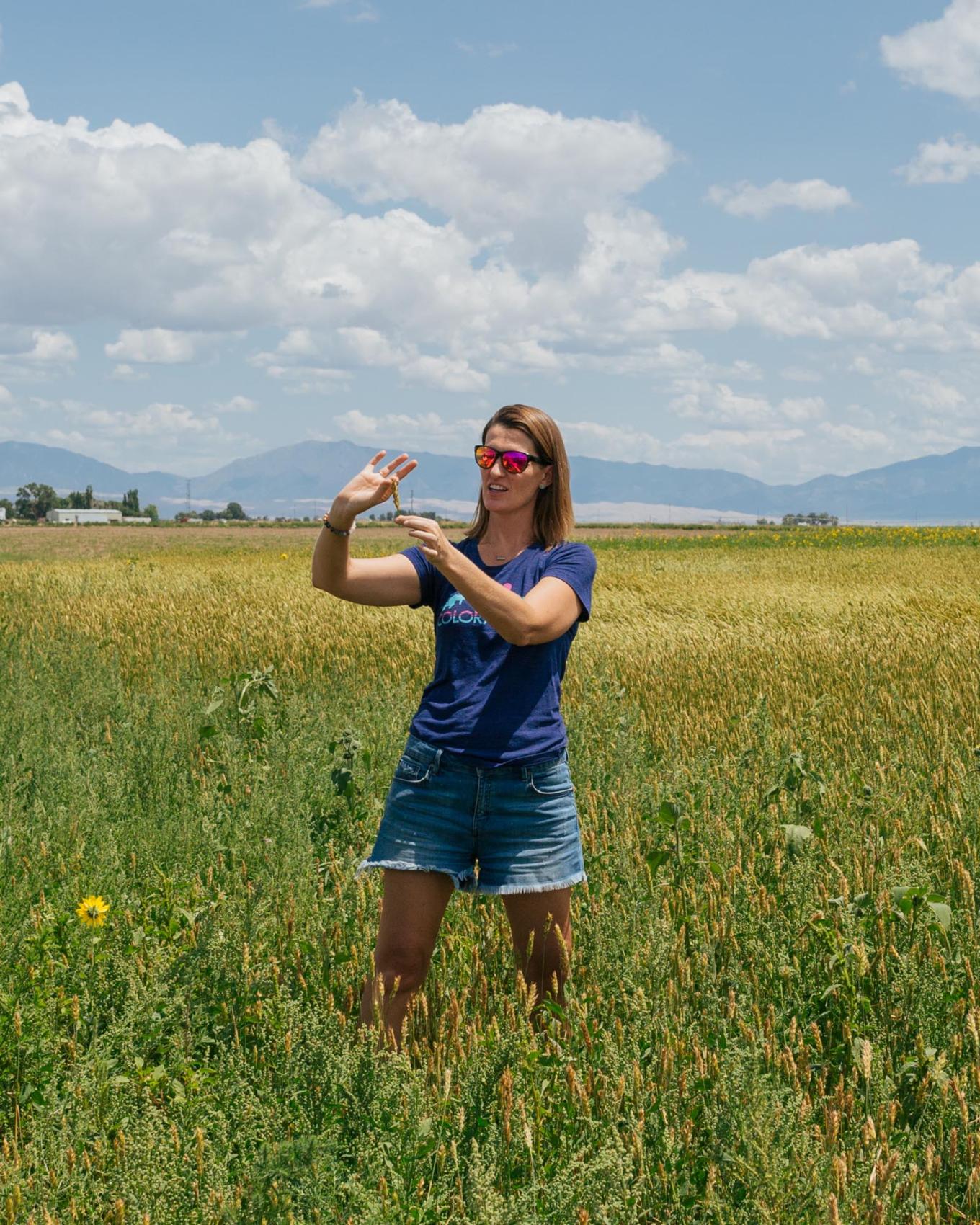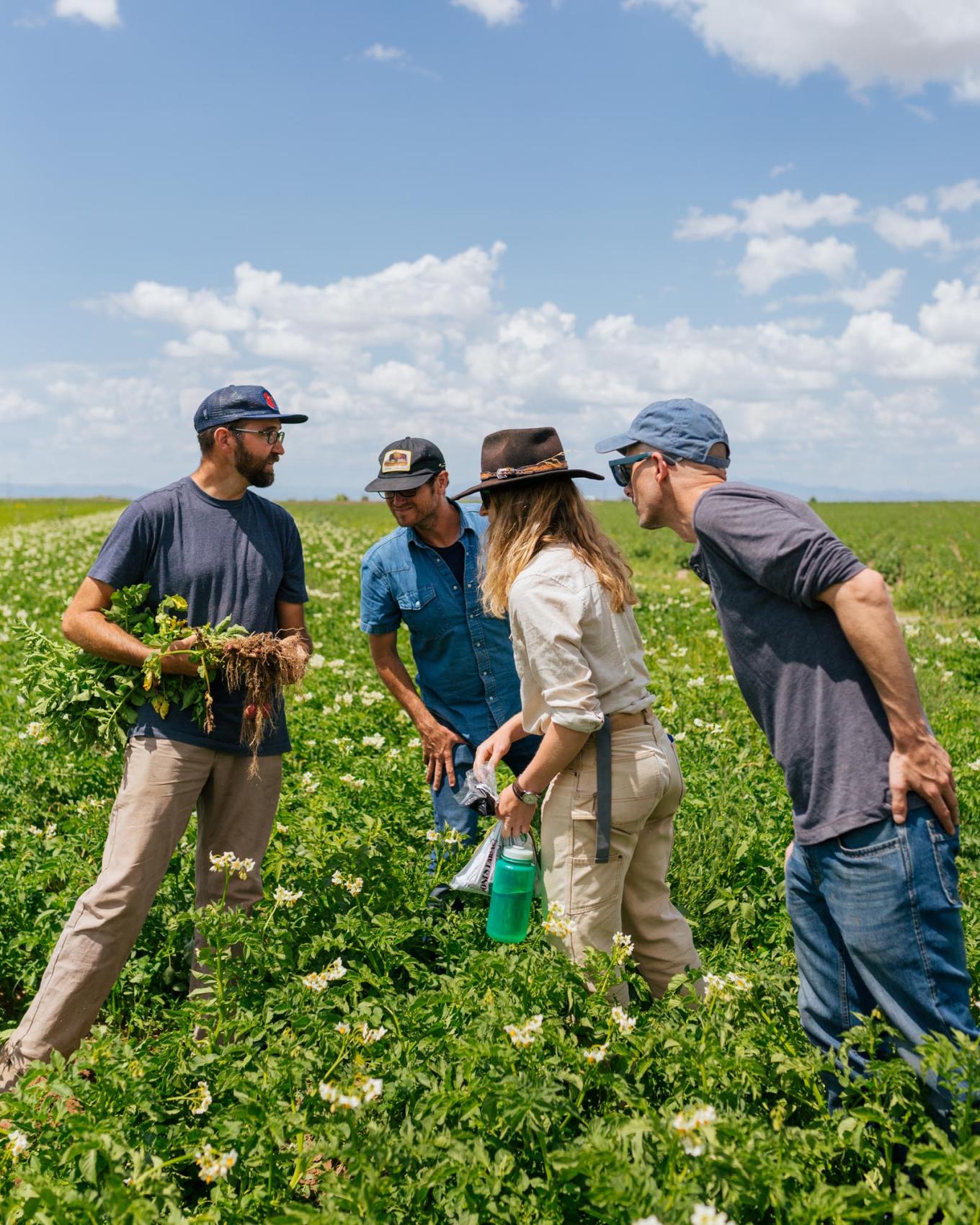
The Mad Agriculture Journal
Celebrating Potato Diversity in the San Luis Valley
Published on
November 30, 2020
Written by
Emily Payne
Photos by
Sophia Piña-McMahon
Lee esto en español.
Like many of their neighbors, the Jones family has been farming for nearly a century. Since Dr. Thomas Jefferson Jones established his medical practice and town pharmacy, five generations of Joneses have called the San Luis Valley of Colorado home. Michael and Sarah—with their children Opal, Juliette, and Georgia—are the latest generation to help run Jones Farms Organics, continuing the farming tradition Grandpa Cuvier started in 1925.
San Luis Valley is the second-largest fresh potato-producing region in the United States, spanning 8,000 square miles to comprise the largest high-altitude desert in North America. The growing season lasts only 90 days, and the region is home to some of the coldest temperatures and lowest rainfalls in Colorado; it is not uncommon for farmers to be hit with a killing frost in July. But sandy soil and an abundance of sunshine are a boon for potato crops.
This thriving agricultural landscape has strained the region’s aquifer. Water use outpaced supply for most of the 20th century, and unprecedented droughts in recent decades have exasperated the issue. The Rio Grande river’s flow was one of the lowest ever recorded in 2018, and as of August 2020, 100 percent of Colorado was designated as abnormally dry or in drought. Meanwhile, booming Front Range real estate has intensified the water battle between farmers, regulators, and developers.
“Regenerative agriculture can play a huge role in the soil being a sponge and helping to save water,” says Sarah. But in the Valley, regenerative methodologies remain a rarity.

The family jokes that Michael’s father Rob Jones’s midlife crisis was going organic in 2005. He had studied organic farming since returning to the farm after college and began experimenting with what were at the time rarely used methods. Rob applied his background in biology to pay more attention to the living matter in the soil, and he soon got involved with soil health groups, conventions, and other meetups to learn more. When he saw that the amount of pesticides, fertilizer, and herbicides he had to apply every year was increasing, but yield was not, the need to shift away from conventional farming was clear.
But in the Valley, a few big farming families gave up their organic certifications this year. Lower yields, higher weeds, no chemical use, and more paperwork and hassle for organic audits—as well as the high price of conventional—meant it no longer made sense to them as a business to grow organics. “We’re talking fifth and sixth-generation farmers throwing in the towel,” Sarah says. Meanwhile, the Jones family often can’t produce enough to supply the demand for organic at their market.
Growing organically and regeneratively is a constant learning experience. “It’s exhilarating and exhausting and rewarding—and also, it’s just really hard,” Sarah admits. She and Michael have been farming full-time on Jones Farms Organics for just over three years. But in that time, they have pioneered an unexpected niche: rare potato varieties.
It began in 2014, when Rob Jones saw a major disconnect in the market: Sarah and her foodie friends were going crazy over unique potato varieties served at Denver’s restaurants, but the potato warehouse—Jones Farms Organics’ only buyer at the time—didn’t want them. Rob wanted to grow increasingly popular varieties like the Purple Majesty potato, but there was no local market for it.
Sarah got on the phone with potential buyers. She soon got a produce delivery service in the area to include Rob’s new potatoes in their boxes. Next, she approached local chefs, who at the time only partnered with very small, very local farms. A San Luis Valley farmer sending a pallet of potatoes up to Denver—while neighbors sent them up by the semi-load—was laughable. The delivery fees alone would be enormous, the family was told, and they would never make a profit.
But the right pieces fell into place when Jones Farms Organics started selling their red, white, and blue potatoes to Whole Foods Market; the “colorful Colorado medley” was born. Through a partnership with the Colorado State University potato research center, about 30 minutes from the farm, Sarah goes potato shopping every year to try out “funky potato varieties that no one else really wants.” The family grows these essentially exclusive varieties organically and regeneratively then sends them to retail via Whole Foods, where they have been incredibly popular.

Potatoes have a biologically complex history. Cultivation dates back about 7,000 years across the central Andes Mountains and modern-day Peru, Bolivia, and Ecuador. There are 5,000 or more potato varieties, “but as Americans, we’re so good at getting rid of all the cool varieties and narrowing it down to one boring variety that we think is the best,” Sarah notes. For the Joneses, potatoes should have color, variety, and diversity—and incredible flavor.
“I’m trying to do for potatoes like what’s been done for apples,” Sarah says. “At the end of the day, they’re all potatoes, but they all have different uses and different flavor profiles. Instead of calling every single yellow potato a Yukon potato, let’s actually call them by their name.” Her personal favorite is nicknamed The Black Velvet: a beautiful, deep purple delicacy. Chefs love the Yellow Jelly potato, and the Jones’s large tie-dye potatoes make the best hash browns, Sarah says. At home, her girls go crazy over pink varieties that make mashed potatoes look like strawberry ice cream.
Cultivating at-times temperamental heirloom varieties organically and regeneratively does add time and labor without much gain in profit, Sarah says. Michael works 12 to 14-hour days, six days per week. In the off season—when other farmers may be preparing for the coming season, working on equipment, skiing, or spending more time with family—Michael works a biotech consulting job to keep the bills paid. They support their family of five on just one sustainably farmed circle, or about 120 acres. This is something unheard-of in San Luis Valley, where most farmers are working with upwards of 20 circles, or more than 2,000 acres. But for the Jones family, there’s no question that this is the way they should be farming.
Michael and Sarah follow Rob Jones’s dedication to promoting soil organic matter, seeing it as key to not just a sustainable business but a healthier world. “We feel strongly about soil health, the health of the planet, the health of our family, and the health of our customers,” Sarah says. While most farmers in the Valley, both organic and conventional, grow potatoes and barley on an every-other-year rotation, Michael and Sarah have added heirloom grain and wheat to work towards a four-year rotation for better soil health.
The diversification is paying off—they’re seeing demand and a market for the new crops. “Especially through the pandemic, I’ve seen more of a connection. People want to know they’re not just buying from a giant corporation; they want to know it’s a small family farm. And they’re literally supporting our daughters’ ballet classes.”
The Joneses now work with a handful of distributors and partner with some of the state’s top chefs: potatoes for James Beard award-winner Alex Seidel of Mercantile, Fruition, and Chook Chicken; wheat for Kelly Whitaker’s award-winning sourdough at The Wolf’s Tailor; and rye for The Family Jones Spirit House liquor (coincidentally sharing a name, but no relation). They have also increased their volume for Whole Foods Market, doubling the medley’s acreage since beginning the partnership.

Jones Farms Organics is now the largest grower in the state for heirloom organic whole wheat and rye, and they aim to keep expanding. They’re growing sunflowers for Colorado Mill sunflower oil and are looking into safflower oil partners. Jones Farms Organics chicken has such a following at the farmers’ market now, Sarah says, that she could likely sell double or triple what they’re producing.
Deliberately diversifying both their crops and their customers is imperative for Michael and Sarah; the pandemic was a stark reminder to not put all their eggs (or potatoes) in one basket. While restaurant orders disappeared early in the year, Jones Farms Organics’ Whole Foods orders surged.
Sarah talks with all customers before deciding what to plant each season, but she doesn’t do contracts: “Everything is built on trust and word-of-mouth. And that blows people away.” The amount of time and energy that would go into creating a contract doesn’t matter if either party cannot deliver at the end of the day, she says. Instead, the Joneses prefer to get to know their customer, build a relationship, develop trust, and get a handshake.
Their farmers’ market following is where many of those relationships are formed, and where Sarah is energized most: “Hearing direct feedback and positivity from our customers sustains me and gives me energy back that maybe I lost over the week.”
Michael and Sarah are now converting a house they recently purchased into a future agritourism site—Farmbnb, as Sarah calls it. “We’re organic, we’re regenerative, we’re multigenerational, we’re local… I always joke that we’ve got all of the keywords there, but we also have the passion and the story behind it,” she says. By hosting, she hopes to connect with even more customers to share how the Jones family farms differently, and why it’s important—not just for more delicious food, but healthier communities and ecosystems.
